Jun 06, 2025
Author:Lisa Martinez
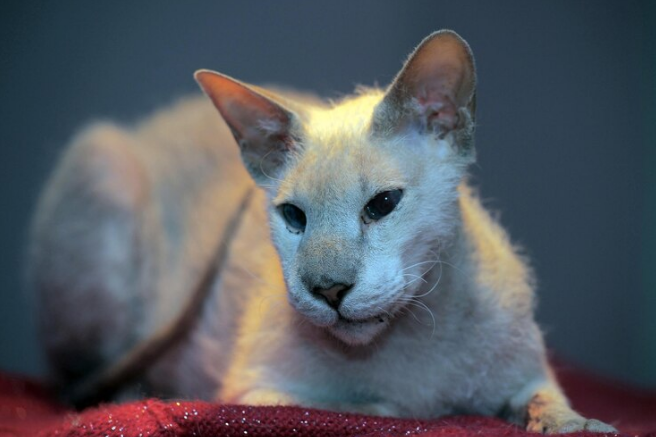
Not all shorthaired cats are low-maintenance wallflowers. Some come wrapped in curls and packed with personality. The LaPerm Shorthair flips the script on what you’d expect from a shorthaired breed—more affectionate than aloof, more interactive than independent.
Their appearance turns heads. Their behavior changes minds. And if you’ve been told that high-energy cats are always high-maintenance, this breed proves otherwise.
But here’s the catch—LaPerm Shorthairs aren’t for everyone. They're quirky. They’re clingy in the best way. And their coat? It’s not just for show.
In this article, we’ll break down:
● Where the LaPerm Shorthair comes from—and what makes them so rare
● How their unique curly coat behaves and what it needs
● Temperament traits you’ll either love or find overwhelming
● Whether this breed fits your home, lifestyle, or schedule
● How to meet their grooming, nutrition, and enrichment needs
● Common health concerns and what to watch for long-term
Let’s get into what makes these cats stand out—and what you’ll need to keep them thriving.
You won’t find the LaPerm Shorthair in every breeder catalog—or at most shelters. That’s not by accident. This breed’s origin story is a genetic one-off that turned into a recognized standard. And the rarity? It’s baked into how they came into the world and how few are bred with intent.
It started on an Oregon farm in the early 1980s. A barn cat gave birth to a kitten with an unusual coat—curly, soft, and patchy at first. Over time, that kitten’s curls grew in fully. Her name was Curly. What made her unique wasn’t just the coat, but the dominant gene behind it. That gene didn't hide or skip generations—it showed up, loud and clear, in her offspring.
Breeders noticed and isolated the trait. But they didn’t rush it. They focused on maintaining genetic health over scaling numbers. That decision kept LaPerms healthy but limited their availability.
What makes the LaPerm Shorthair even rarer is how most people confuse it with standard Rex breeds or long-haired LaPerms. But their tight curls, soft texture, and expressions set them apart—if you know what to look for.
These aren’t mass-bred cats. They’re purposefully preserved. And that makes each one count.
The LaPerm Shorthair’s coat doesn’t act like a typical short-haired coat—and that’s the first thing to understand. These aren’t flat, sleek layers that repel dirt and require minimal upkeep. The curls have structure, bounce, and hold shape over time. Think of them as engineered for flexibility, not formality.
In a domestic setting, the coat responds well to stable temperatures, low humidity, and routine care. It retains its curls without matting, provided it isn’t brushed too aggressively. Standard grooming tools designed for flat coats can disrupt the curl pattern, pulling at the underlayer and creating frizz or breakage.
Instead, gentle hand-combing once or twice a week supports the natural curl without stress. Water-based grooming sprays—used sparingly—can help define curl shape when needed. But the coat’s resilience comes from its structure, not heavy products. Too much moisture or oil throws off the balance, especially in indoor climates.
These cats don’t shed heavily, but loose hairs can get caught in the curls. Left unmanaged, buildup can reduce airflow to the skin and cause irritation. That’s where consistency in care, not frequency, matters most.
In outdoor or semi-feral conditions, the LaPerm Shorthair’s coat changes. Curls can tighten or loosen based on moisture, dust exposure, and weather swings. In colder climates, the undercoat becomes more active. It thickens to trap heat, but if soaked repeatedly without time to dry, the curl flattens out and loses structure.
In wild or unregulated conditions, coat maintenance stops being cosmetic. Dirt, debris, and even burrs can get caught in the curls. If left unattended, the coat can mat at pressure points—like the shoulders, base of the tail, or under the arms. This limits movement and causes discomfort.
Even in managed outdoor colonies or barns, this breed’s coat needs occasional attention to avoid deterioration. The natural oils are light, and overexposure to dirt or poor nutrition strips that protective layer quickly.
Keeping a LaPerm Shorthair in good condition doesn’t require professional grooming, but it does require informed care. Here's what supports coat health indoors:
● Routine grooming by hand — weekly, not daily
● Non-invasive detangling — using wide-tooth combs or fingers
● Proper hydration and protein intake — support skin elasticity and coat bounce
● Minimized bathing — water can stretch the curl or lead to loss of texture if overused
● Climate consistency — stable room temps help maintain coat structure
You don’t need to pamper the curls. You need to protect them from damage. These coats were shaped by genetics, not styling. Treat them with care, not force.
The LaPerm Shorthair doesn’t blend into the background. This breed craves interaction, and it shows. If you’re expecting a hands-off, independent cat, this one will surprise you fast.
These cats follow people. They want in on the action, no matter how small. You pick up a pen—they watch. You change rooms—they trail behind. They don’t need permission to be involved. That high social drive makes them excellent companions for those who want a cat that engages without being pushy.
LaPerm Shorthairs tend to form tight bonds with one or two people in a household. They aren't loud, but they are consistent. Expect soft vocal cues, head bumps, and lap hops. They use body language more than meowing to make their point. That can feel refreshing—or constant—depending on your threshold for attention.
They’re curious, but not destructive. Smart, but not stubborn. Their play style is fast and deliberate. They don’t waste energy. Once the toy’s boring, they drop it and walk away.
Not everyone wants a cat that shadows them. If left alone too often, these cats can become anxious. They don’t do well with long periods of isolation. Boredom shows up as clinginess, pacing, or interrupting whatever you're trying to do.
They're not disruptive in volume, but they will insist on being noticed. For someone with a packed schedule or limited bandwidth for social interaction, that level of presence can feel overwhelming.
But to someone who values companionship without chaos, this breed fits tightly into daily life. They know when to be still. They also know when to demand connection. And they’re rarely wrong about the timing.
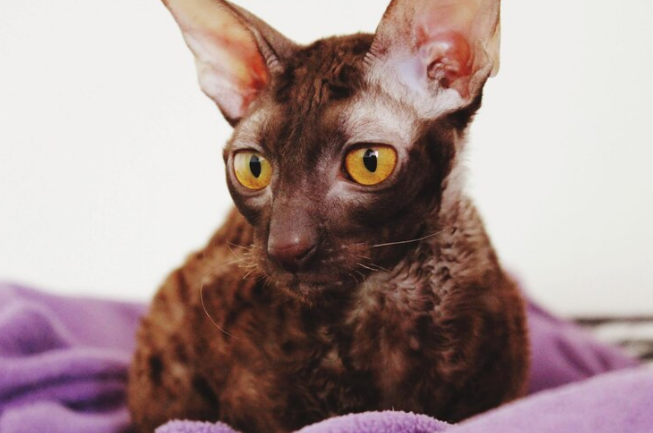
Before you bring a LaPerm Shorthair home, ask one question: Does your day allow room for interaction? This breed isn’t a low-engagement companion. Their social needs are steady, their routines are consistent, and their reactions to neglect are noticeable.
Space isn’t the issue. Attention is. LaPerm Shorthairs adapt well to apartments and houses alike, but they need regular contact and mental stimulation. If left alone too long, they’ll seek out stimulation on their own—often in places you didn’t plan for.
They don’t require a dedicated cat room or elaborate towers. They need access to high-traffic areas, perching spots near people, and at least one daily session of active play. Without that, their behavior may shift into clingy patterns or attention-seeking habits that are hard to dial back.
You don’t need to stay home all day, but your routine must include set blocks of time for bonding. Short, consistent check-ins matter more than long, irregular bursts of attention. If your lifestyle includes travel, long workdays, or late nights out, you’ll need systems in place to cover interaction, not just food and water.
This breed does best with:
● Predictable feeding and play windows
● Daily verbal or physical engagement
● Calm environments without loud disruptions
● Access to sunny spots, high ledges, or windows
● Steady routines—not chaotic ones
They thrive where attention is shared, not rationed. If your rhythm matches that need, the fit is strong. If not, the stress builds on both sides.
Caring for a LaPerm Shorthair goes beyond feeding and brushing. Their unique coat, active mind, and moderate energy levels require a care routine that’s balanced, consistent, and easy to maintain long term. When done right, upkeep feels natural, not demanding.
The LaPerm Shorthair’s coat is structurally distinct from standard short-haired breeds. Its loosely curled guard hairs form a light, airy texture that sits away from the skin. While the coat resists heavy matting, it’s not self-regulating. Improper grooming—or the wrong tools—can alter the curl pattern permanently.
● Avoid bristle and slicker brushes. These tools overstretch the guard hairs and create frizz, especially in dry climates.
● Use a wide-tooth comb or grooming rake with rounded pins to lift dead hair from the undercoat without flattening the curl.
● Hand-fluffing using slightly damp fingers is effective for maintaining curl definition without applying weight or breakage to the coat.
● Never groom the coat when completely dry in low-humidity settings. A light misting with distilled water helps reduce static and friction before combing.
● Bathe infrequently. pH-balanced feline shampoos (sulfate-free, protein-safe) should be used only when buildup or odor is present. Let the coat air-dry naturally—heat or blow-drying can disrupt the follicle tension that gives the curls their shape.
Over-grooming can stress the follicles and result in inconsistent regrowth. Keep a grooming schedule that supports—not strips—the natural oil balance.
A LaPerm Shorthair’s coat health is directly tied to nutrient absorption and metabolic stability. Protein synthesis affects hair structure, elasticity, and turnover cycles. Inadequate intake shows quickly in this breed, typically through dull, uneven curls or flaking skin near the haunches and shoulders.
● Protein: Prioritize 35–40% dry matter basis, ideally from bioavailable animal sources like turkey, duck, or salmon. These offer a high amino acid profile that supports keratin formation and muscle maintenance.
● Fats: Include 15–20% fat content, with omega-3 and omega-6 fatty acids (EPA, DHA, linoleic acid). These maintain dermal barrier function and regulate follicular inflammation.
● Moisture: A minimum of 70% moisture (through wet foods or added hydration) helps prevent urinary issues and supports enzymatic function in the skin.
Feeding frequency matters too. Dividing daily calories into 2–3 fixed intervals improves glycemic control and supports behavioral balance.
To maintain consistency in feeding schedules and portion accuracy, WOpet smart feeders allow programmable, app-based control. This limits overeating, supports coat integrity, and aligns with biologically appropriate meal spacing.
● Biotin and zinc for keratin structure and skin cell turnover
● Taurine to support immune function and cardiac health
● L-carnitine if your cat shows signs of low muscle tone or fat retention
Avoid food rotation that lacks macronutrient continuity—this breed’s coat responds best to steady nutrient profiles over time.
The LaPerm Shorthair exhibits high sensory intelligence and moderate prey-drive instincts. Their cognitive load isn’t passive—it demands regular engagement with purpose-built stimuli.
● Environmental variability: Change toy sets every 5–7 days to prevent object habituation. Choose toys that trigger stalking, batting, and problem-solving behaviors, not idle movement.
● Scent and auditory play: Rotate between scent-enriched items (catnip, silvervine, valerian root) and audio-based toys that mimic small prey or birds. This supports limbic stimulation without overstimulation.
● Elevated vertical space: Install perches, tunnels, and climbing ramps. Height access provides territorial control and reduces anxiety, especially in multi-pet homes.
For long periods of absence, passive entertainment fails to meet the need. Devices like WOpet’s interactive cameras with treat dispensers offer active sensory feedback—voice recognition, live video tracking, and reward-based reinforcement that mimics presence and reduces separation stress.
|
Time Block |
Activity Type |
Duration |
|
Morning (7–9 AM) |
Food puzzle + light tracking play |
15–20 min |
|
Midday (12–2 PM) |
Rest + sensory stimulus (window, toys) |
Passive |
|
Evening (6–8 PM) |
Interactive play + vertical climbing |
20–30 min |
Understimulated LaPerms may exhibit tail chasing, pacing, or unwanted vocalization. Treat these as feedback, not disobedience.
While the LaPerm Shorthair is widely regarded as a structurally sound breed, selective breeding practices and genetic concentration still expose it to specific vulnerabilities. These concerns aren’t guaranteed, but they’re predictable enough to warrant attention across the lifespan.
This form of heart muscle thickening has been observed in some LaPerm bloodlines. It can reduce cardiac efficiency and lead to arrhythmias or fluid buildup if not monitored.
What to watch:
● Rapid breathing at rest
● Lethargy after short periods of play
● A low-pitched or soft-sounding murmur on auscultation
Annual echocardiograms after the age of three are advisable in structured breeding lines.
Although more common in compact or stocky breeds, mild cases of luxation—where the kneecap shifts out of place—can appear in LaPerm Shorthairs. This is usually due to ligament looseness or shallow trochlear grooves.
What to watch:
● Temporary skipping gait
● Sudden hesitation before jumping
● Knee stiffness after napping
Early diagnosis through physical palpation allows for conservative management through weight control and muscle maintenance.
The LaPerm’s curl structure can trap sebum near the root line, especially under the neck, belly, and base of the tail. Over time, this buildup may trigger localized dermatitis or chronic irritation.
What to watch:
● Greasy patches with flaky buildup
● Excessive grooming or biting localized to one area
● Subtle odor that persists after grooming
Managing skin pH and avoiding aggressive coat disruption reduces this risk over time.
Some LaPerms exhibit narrow jaw spacing or early tartar formation due to misaligned premolars. If left untreated, inflammation spreads and may affect the surrounding bone.
What to watch:
● Brownish tartar near the gum line
● Intermittent pawing at the mouth
● Change in chewing side preference
Routine oral exams and scaling, even before visible buildup, protect long-term oral health.
Early recognition and regular preventive care are key. These aren’t high-risk issues, but they’re the ones most likely to build silently if missed.
Caring for a LaPerm Shorthair doesn’t need to feel complicated. Once you understand their coat behavior, energy rhythm, and daily care needs, everything starts to click into place. These cats may be rare, but supporting their health and temperament doesn’t require rare expertise—just smart, consistent action.
You’ve got the coat knowledge. You’ve got the personality profile. Now it’s about applying that insight to create an environment where this breed stays stable, connected, and well cared for. The right tools and routines go a long way, especially when they work in the background while you stay focused on bonding.
Here’s what this guide helped you lock down:
● The origin of the LaPerm Shorthair and why the breed remains limited in numbers
● How their tight, structured curls respond to grooming methods and environmental factors
● Behavioral patterns you’ll see daily—and how to read them clearly
● Whether your schedule and space can realistically support their needs
● What it takes to keep their grooming, feeding, and play routines optimized
● Common long-term health concerns and the early signs worth spotting
When pet care tools match your cat’s needs, routines become easier to manage and harder to forget. That’s exactly where WOpet steps in—making consistency effortless and care more rewarding.
Label:
Popular Post

What to Feed a Sick Dog With No Appetite? [2025 Guide]
May 16, 2023

Troubleshooting Common Issues with Automatic Pet Feeders: Tips & Tricks for Pet Owners
Oct 26, 2023
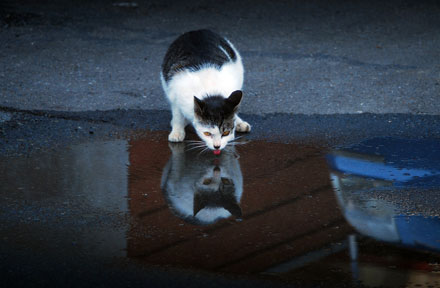
Why Does My Cat Cough After Drinking Water? 8 Potential Reasons
Mar 13, 2023
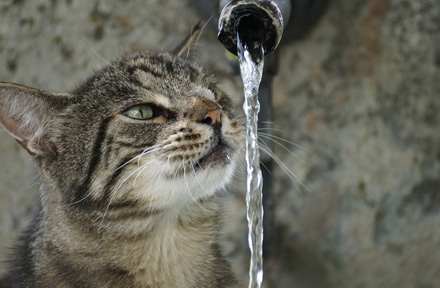
Why is My Cat Throwing up Water? Top 5 Causes Here
Feb 08, 2023
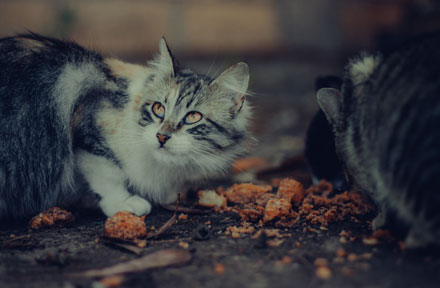
My Cat Only Eats A Little at A Time - What to Do?
Feb 27, 2023
$99.99
$129.99
Copyright © 2025 WOPET. All Rights Reserved.